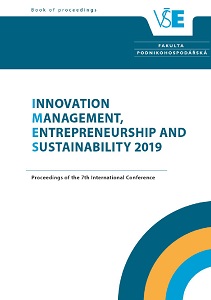Verification of the Organizational Structure
Evolution Model of Retail Trade
Organizations Using Cluster Analysis and the
Method of Rotated Components
Verification of the Organizational Structure
Evolution Model of Retail Trade
Organizations Using Cluster Analysis and the
Method of Rotated Components
Author(s): Alexander L. Bobkov, Igor V. Denisov, Oxana V. Kuchmaeva, Oksana V. Savchina
Subject(s): Social Sciences, Economy
Published by: Vysoká škola ekonomická v Praze
Keywords: Organizational development; statistical research methods
Summary/Abstract: Purpose: Purpose of the study is to clarify the theoretical model of organizational structureevolution, which is based on the hypothesis that two types of organizational structures –sequential and parallel, dialectically replace each other. It is assumed that the growth oforganizations in the transition between two different types of organizational structures hasa different nature – intensive or extensive.
Design/methodology/approach: Retail sector enterprises, whose organizational structure islargely determined by separate divisions, are selected. The cluster analysis is chosen asa research method to split the initial data set into groups. In order to clarify the results ofthe cluster analysis, the principal component method is used. For the study, 2,249 retailorganizations of the Czech Republic were initially selected.
Findings: The analysis put us to make the following clarifications in the model: a) in thetransition from a parallel organizational structure to a sequential one the growth of anorganization is of an intensive nature, and in the transition from a sequential organizationalstructure, growth is extensive; b) development patterns are determined by three key factors: thesize of an organization, the effectiveness of its activities and the age of an organization.
Research/practical implications: The results of the research generally confirmed thehypotheses put forward and showed coincidence with the proposed theoretical model of theevolution of the organizational structure.
Originality/value: The use of the proposed model allows owners and managers to morerationally undertake the development of commercial organizations in the long term.
- Page Range: 52-65
- Page Count: 14
- Publication Year: 2019
- Language: English
- Content File-PDF

